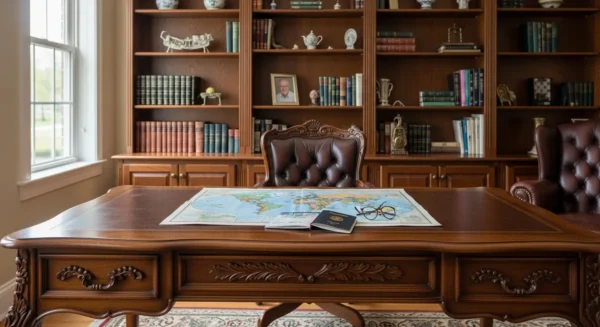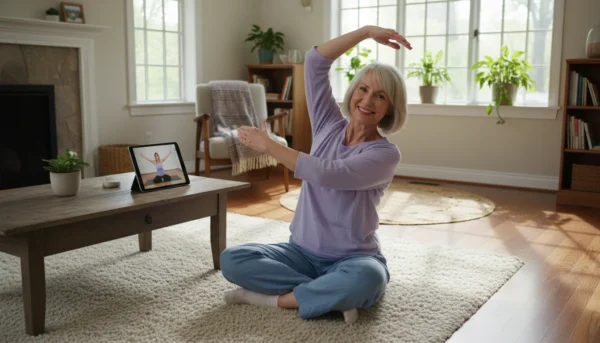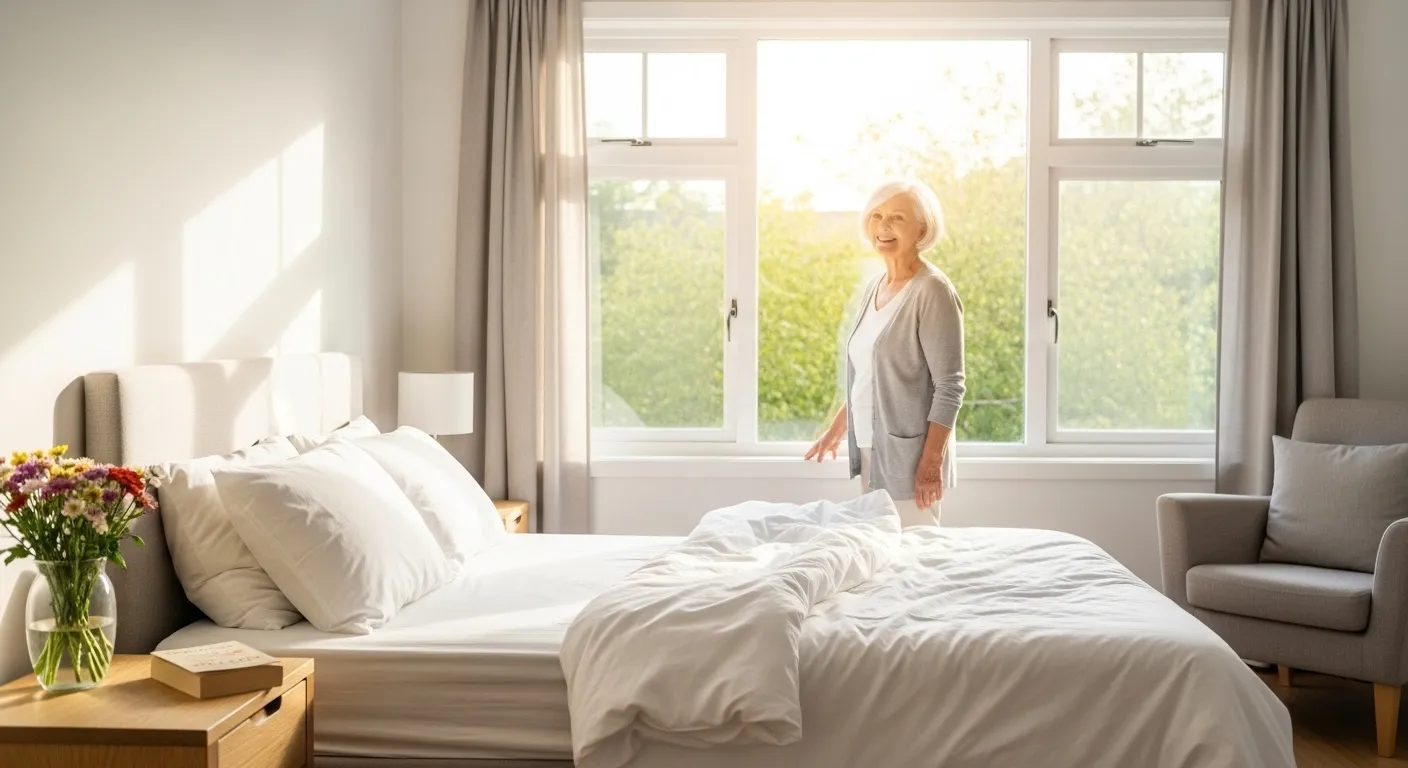
A good night’s sleep is one of the most powerful tools we have for maintaining our health, energy, and mental clarity. As a specialist in senior wellness, I know that as we age, achieving deep, restorative sleep can sometimes feel like a challenge. You might find yourself waking more frequently or feeling less rested in the morning. The good news is that you have more control than you think.
Often, the secret to better sleep isn’t found in a bottle, but in the very room where you lay your head. Your bedroom environment sends constant signals to your brain—either encouraging it to stay alert or inviting it to relax and recharge. By making thoughtful, simple adjustments, you can transform your bedroom from just a place you sleep into a true sanctuary designed for rest.
This guide is designed to walk you through that process, step by step. We will explore how to manage light, sound, temperature, and comfort to create the perfect conditions for a peaceful night. Think of this as your personal blueprint for building a restful bedroom setup.
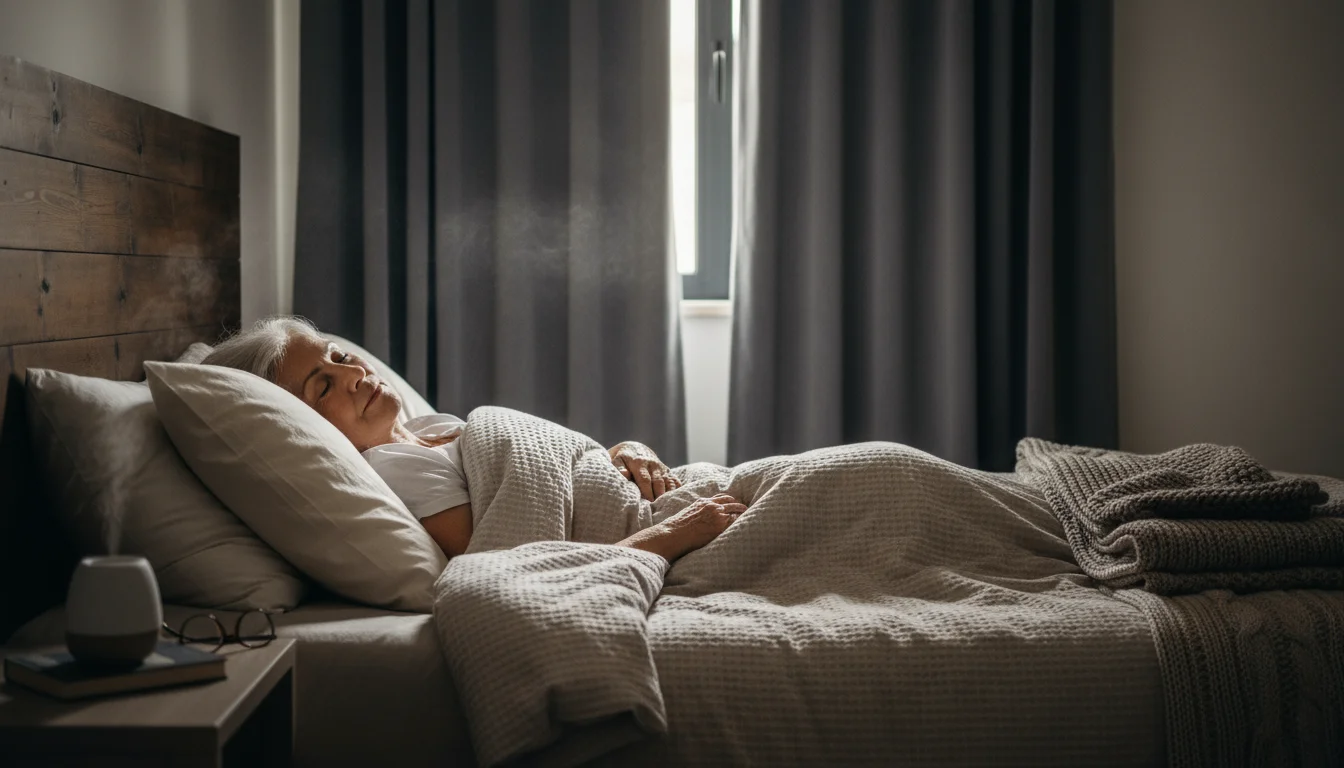
The Foundation: Why Your Bedroom Environment Is a Key to Good Sleep
Before we begin making changes, it’s helpful to understand why this matters so much, especially for seniors. Our bodies have a natural, internal 24-hour clock called the circadian rhythm. This rhythm tells us when to feel sleepy and when to feel awake. It works by responding to cues from our environment, with light being the most important one.
As we get older, our sleep patterns naturally change. We may spend less time in the deepest stages of sleep, making us more easily awakened by disturbances like a passing car, a change in temperature, or a blinking light from a charger. This is where creating an optimal sleep environment becomes so crucial.
A well-designed bedroom minimizes these disruptions and reinforces your body’s natural sleep signals. It helps regulate the production of melatonin, the hormone that makes you feel drowsy. By creating a consistent, calming, and comfortable space, you are actively supporting your brain and body’s ability to get the uninterrupted rest you need to thrive.
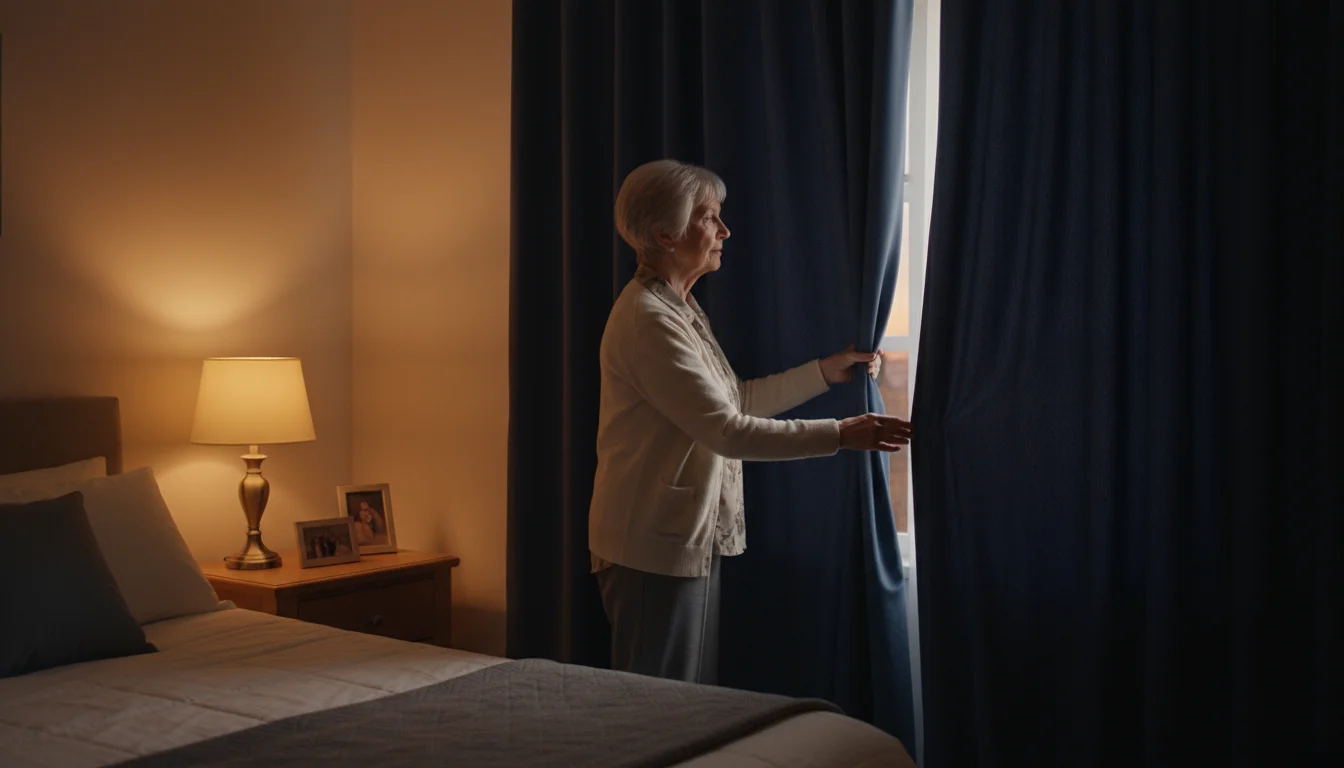
Step 1: Master the Light in Your Bedroom
Light is the most powerful signal that tells your brain it’s time to be awake. To encourage sleep, your goal is to make your bedroom as dark as possible during sleeping hours and to limit your exposure to bright, artificial light in the hour before bed. This is a cornerstone of good senior sleep hygiene.
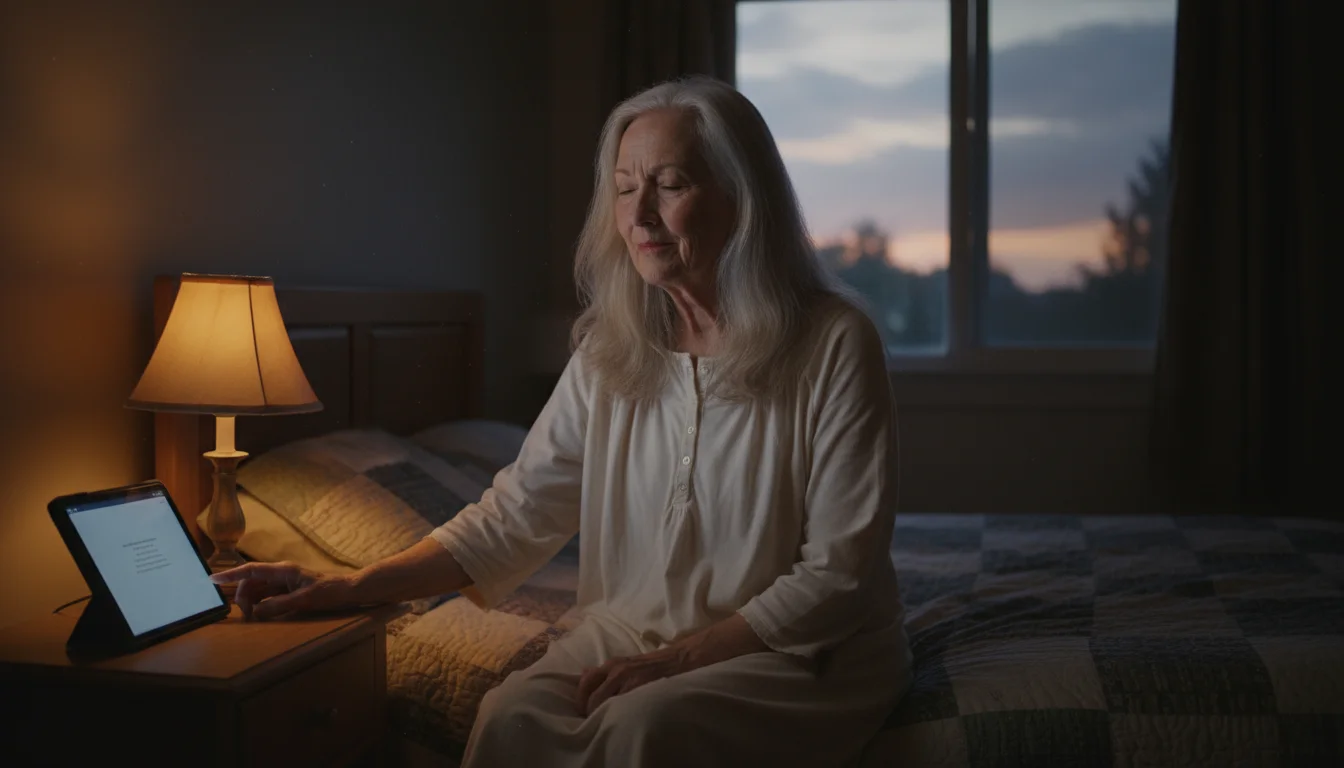
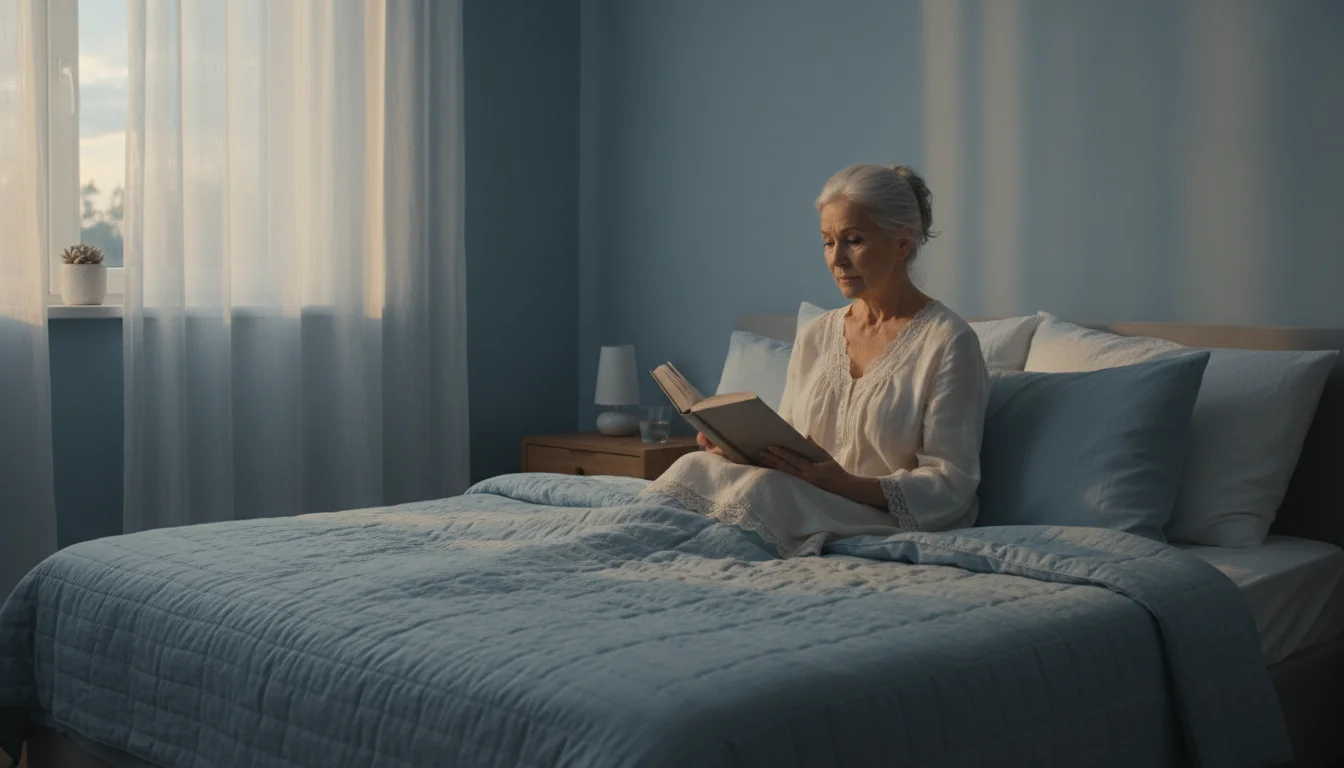
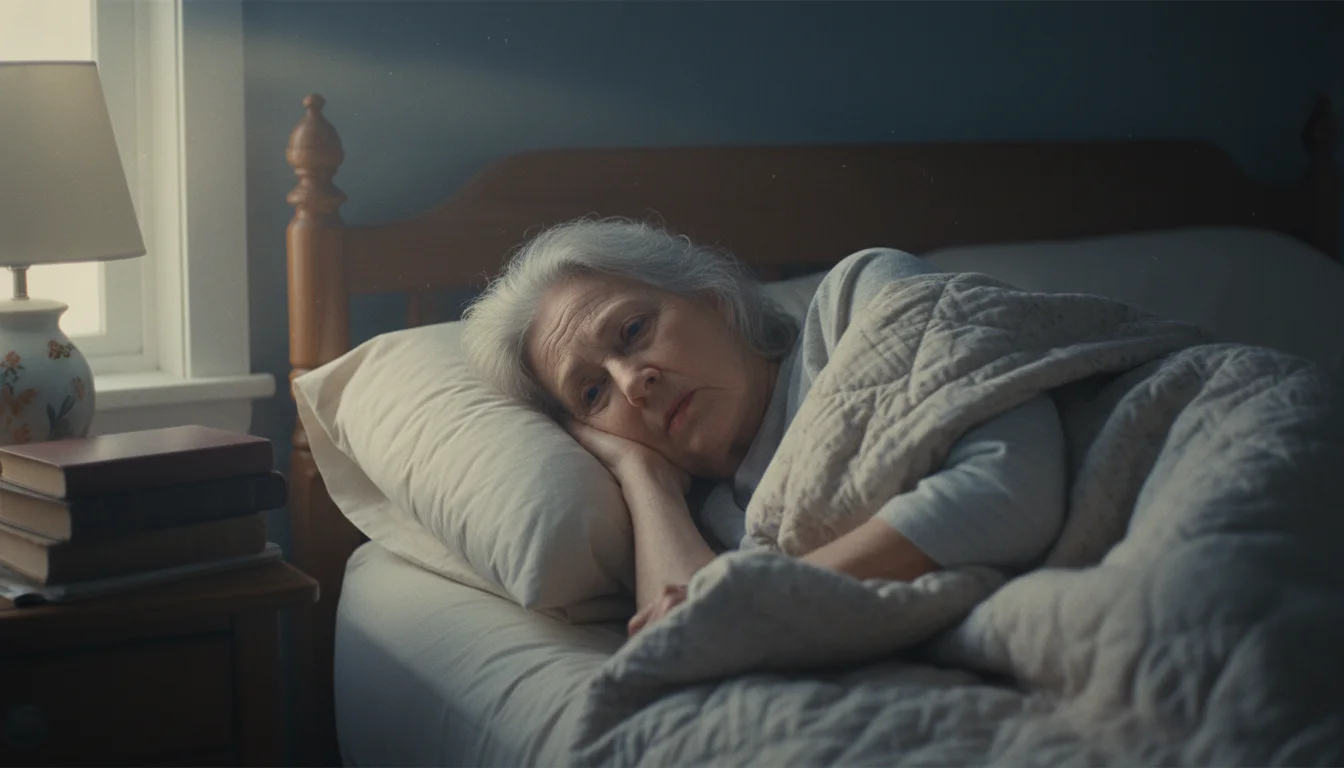
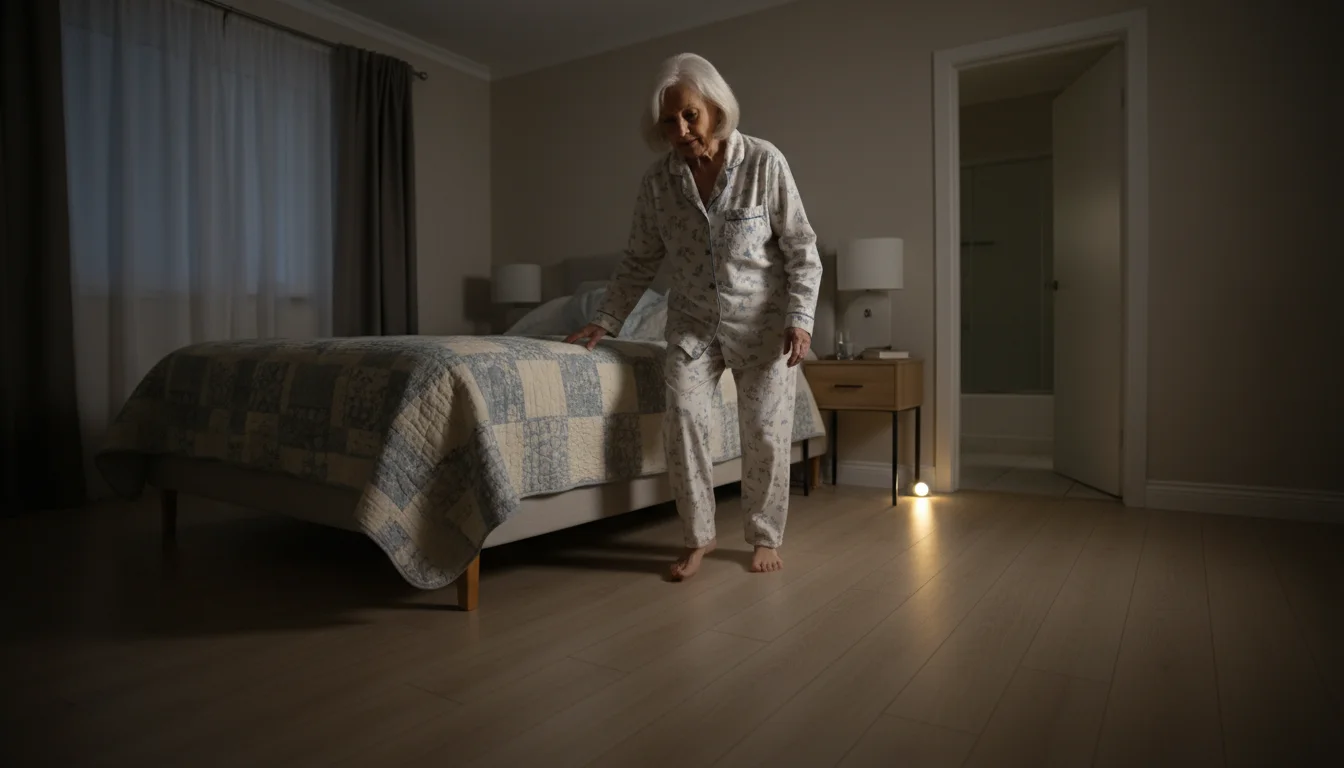
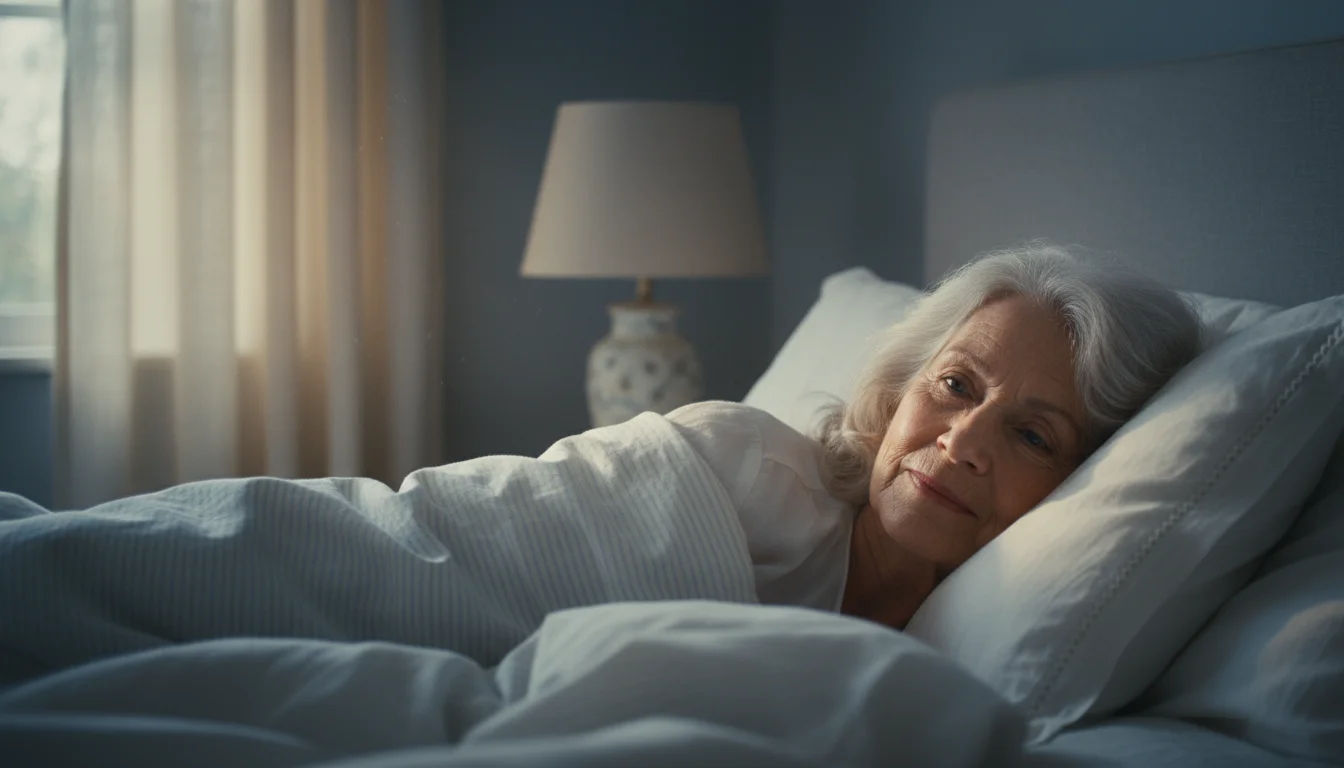

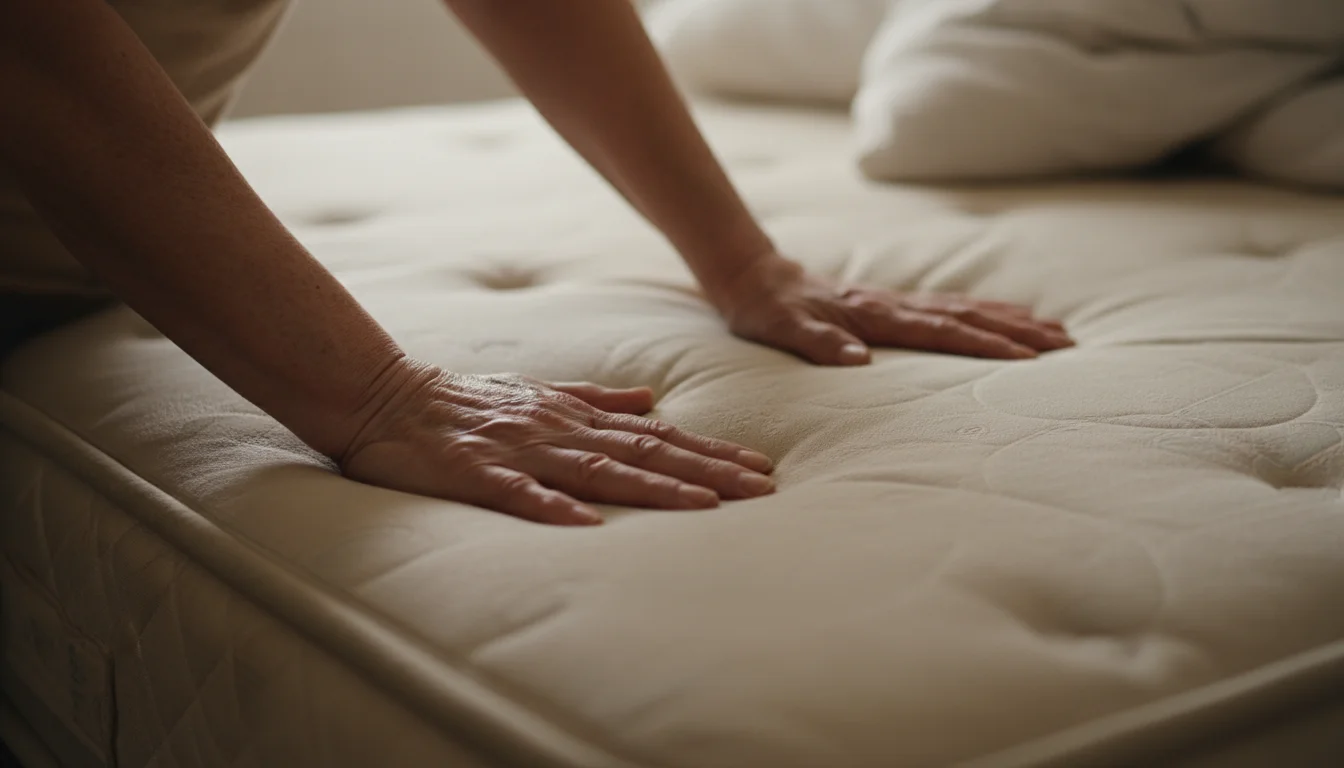
The ‘Why’ for Seniors
Our eyes change with age, and some people become more sensitive to light. Furthermore, exposure to light in the evening—especially the blue light from screens—can more significantly suppress the release of melatonin, making it harder to fall asleep.
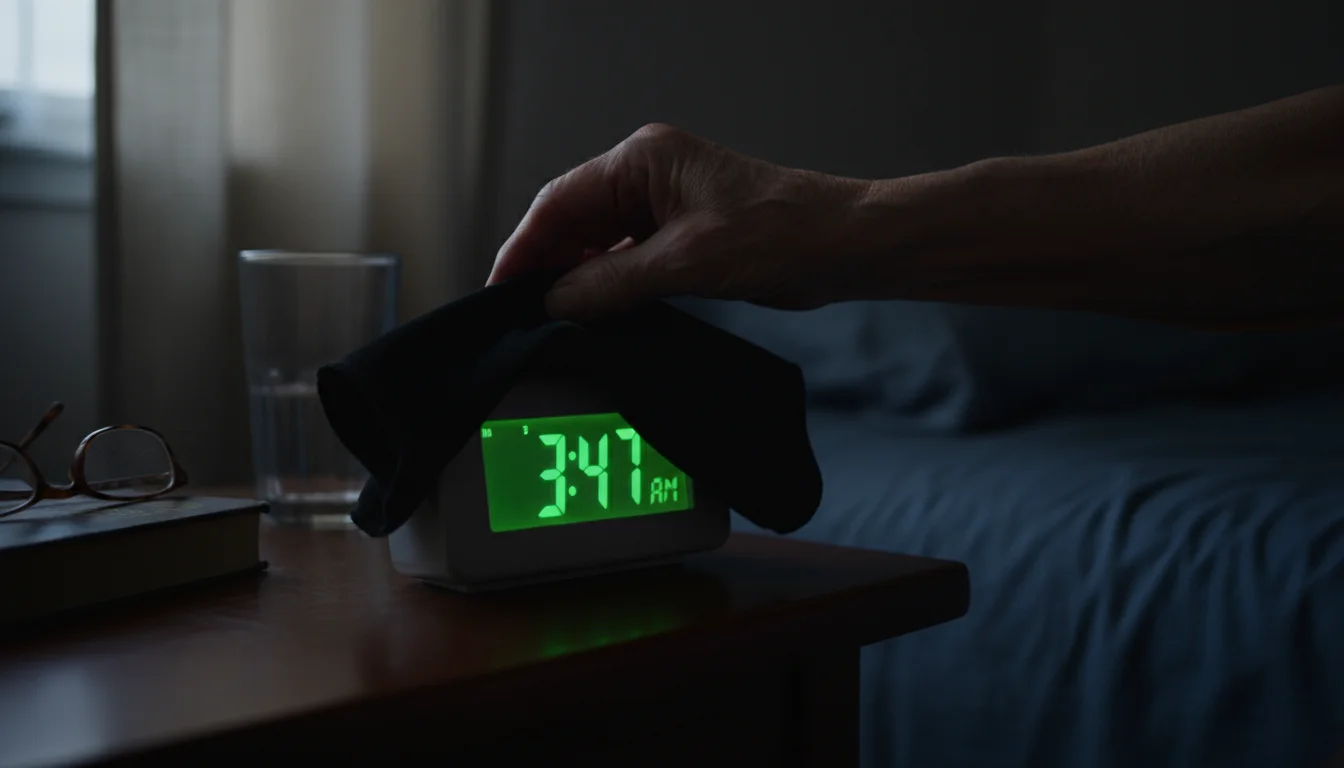
How to Take Control of Light
-
Block All External Light. Streetlights, porch lights, or even a bright moon can filter through standard curtains and disrupt sleep.
How to do it: Invest in a good set of blackout curtains or shades. These are made with a special lining that blocks nearly 100% of outside light. Make sure they are wide enough to cover the entire window frame to prevent light from leaking around the edges. This is one of the most effective sleep environment tips you can implement.
-
Eliminate Small Light Sources Inside the Room. You might be surprised by how many devices in your bedroom emit light, such as digital alarm clocks, television power lights, and phone chargers.
How to do it: The simplest solution is to unplug these devices before bed. If that isn’t practical, cover the small lights with a piece of black electrical tape. If you need to see the time during the night, choose an alarm clock with a dim, red-light display, as red light is the least disruptive to sleep.
-
Adopt a “Digital Sunset.” The bright blue light from televisions, smartphones, tablets, and computers is particularly disruptive to melatonin production.
How to do it: Make it a rule to turn off all screens at least 60 to 90 minutes before your intended bedtime. Instead of watching TV or scrolling on a phone, use this time for a relaxing activity. Read a physical book or magazine under a dim, warm-toned light, listen to calming music, or do some gentle stretches.
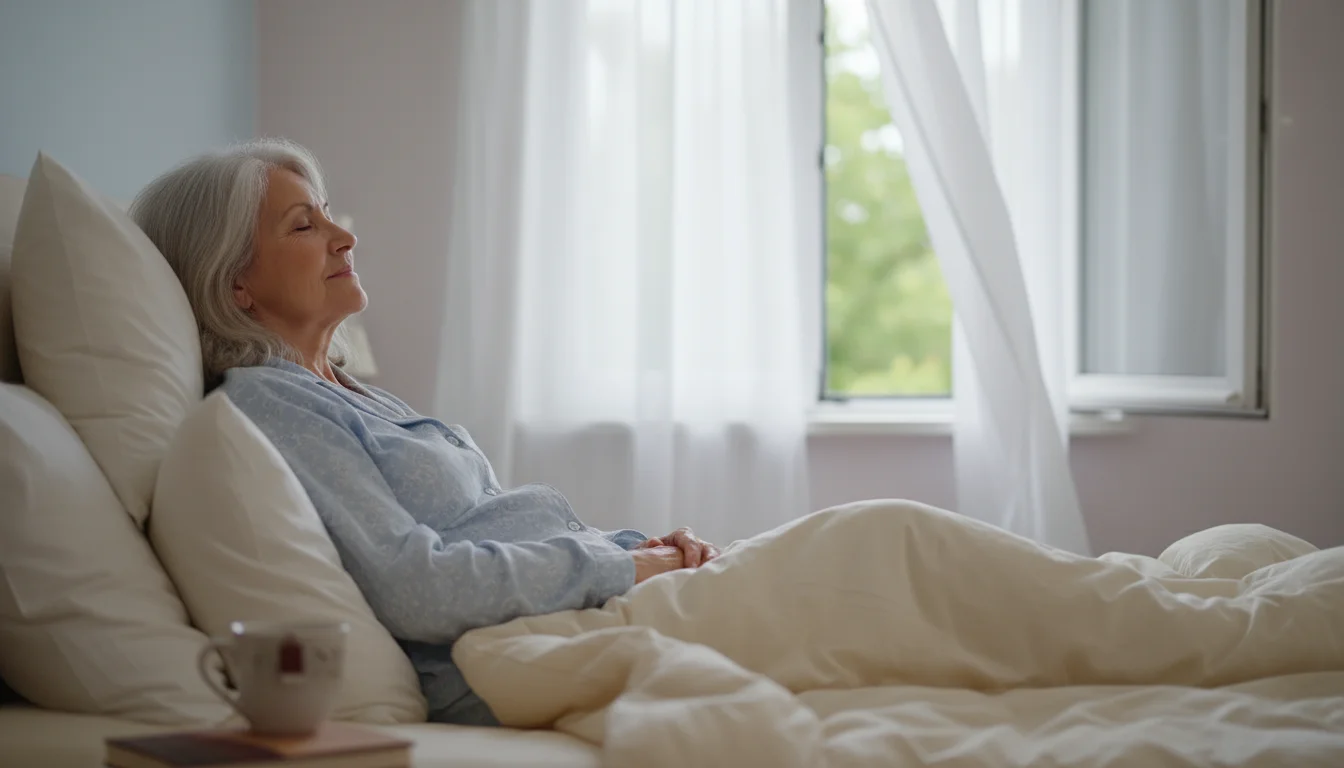
Step 2: Tune Your Room’s Temperature and Air Quality
Your body temperature naturally needs to drop slightly to initiate and maintain sleep. A room that is too warm can interfere with this process, leading to restlessness. A cool, well-ventilated room is far more conducive to deep sleep.
The ‘Why’ for Seniors
Our body’s ability to regulate its internal temperature can become less efficient with age. This makes us more sensitive to rooms that are too hot or too cold. Creating a stable, cool environment helps support your body’s natural thermal regulation for sleep.
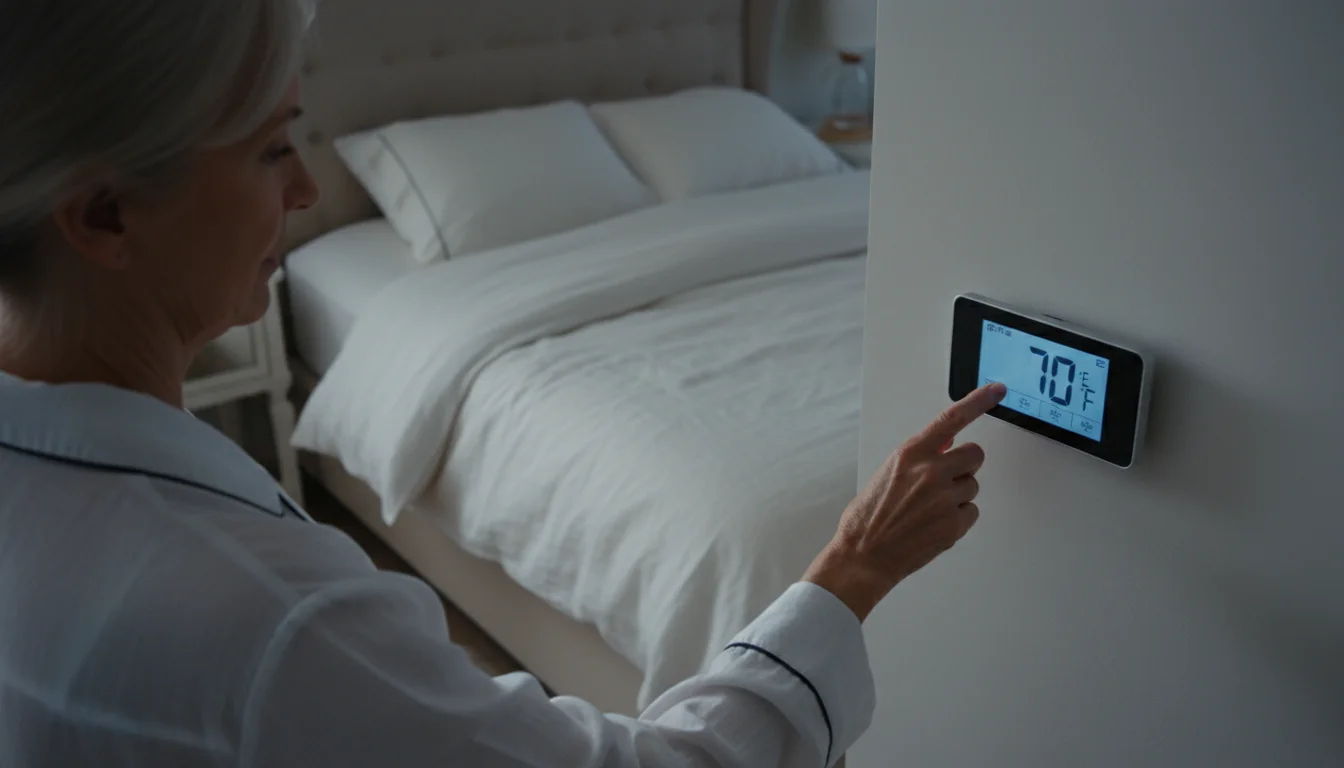
How to Optimize Your Thermal Environment
-
Find Your Ideal Cool Temperature. Most sleep experts recommend a bedroom temperature between 60 and 67 degrees Fahrenheit (15 to 19 degrees Celsius).
How to do it: Use your thermostat to set the temperature within this range. It may take a few nights of experimenting to find what feels best for you. A programmable thermostat can be a great tool, allowing you to automatically lower the temperature an hour before bed.
-
Choose Breathable Bedding and Sleepwear. Fabrics that trap heat, like flannel or heavy synthetic materials, can cause you to overheat during the night.
How to do it: Opt for natural, breathable fibers such as cotton, bamboo, or linen for your sheets, blankets, and pajamas. These materials allow for better air circulation and help wick away moisture, keeping you cool and comfortable.
-
Improve Air Circulation. Stuffy, stagnant air can feel uncomfortable and disrupt sleep.
How to do it: Using a quiet fan can work wonders. It not only circulates the air but also provides a gentle white noise (more on that later). If the weather and safety permit, cracking a window open slightly can also bring in fresh, cool air.
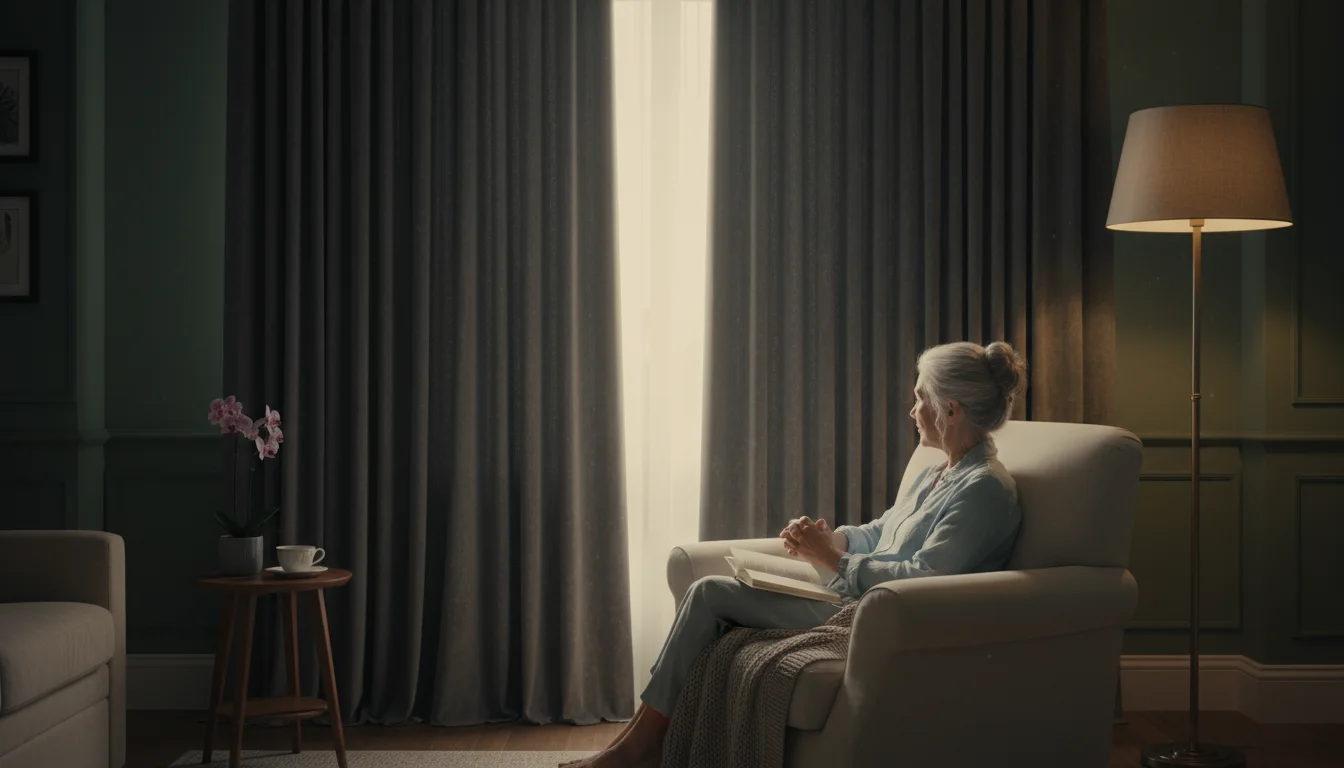
Step 3: Create a Haven of Peace and Quiet
Unpredictable noises are a common culprit of interrupted sleep. A distant siren, a neighbor’s dog barking, or even sounds from within your own home can pull you out of sleep. The goal is to create a consistent and quiet auditory environment.
The ‘Why’ for Seniors
As mentioned, we spend more time in lighter sleep stages as we get older. During these stages, our brains are more reactive to sounds, making us more likely to be fully awakened by a noise that we might have slept through years ago.
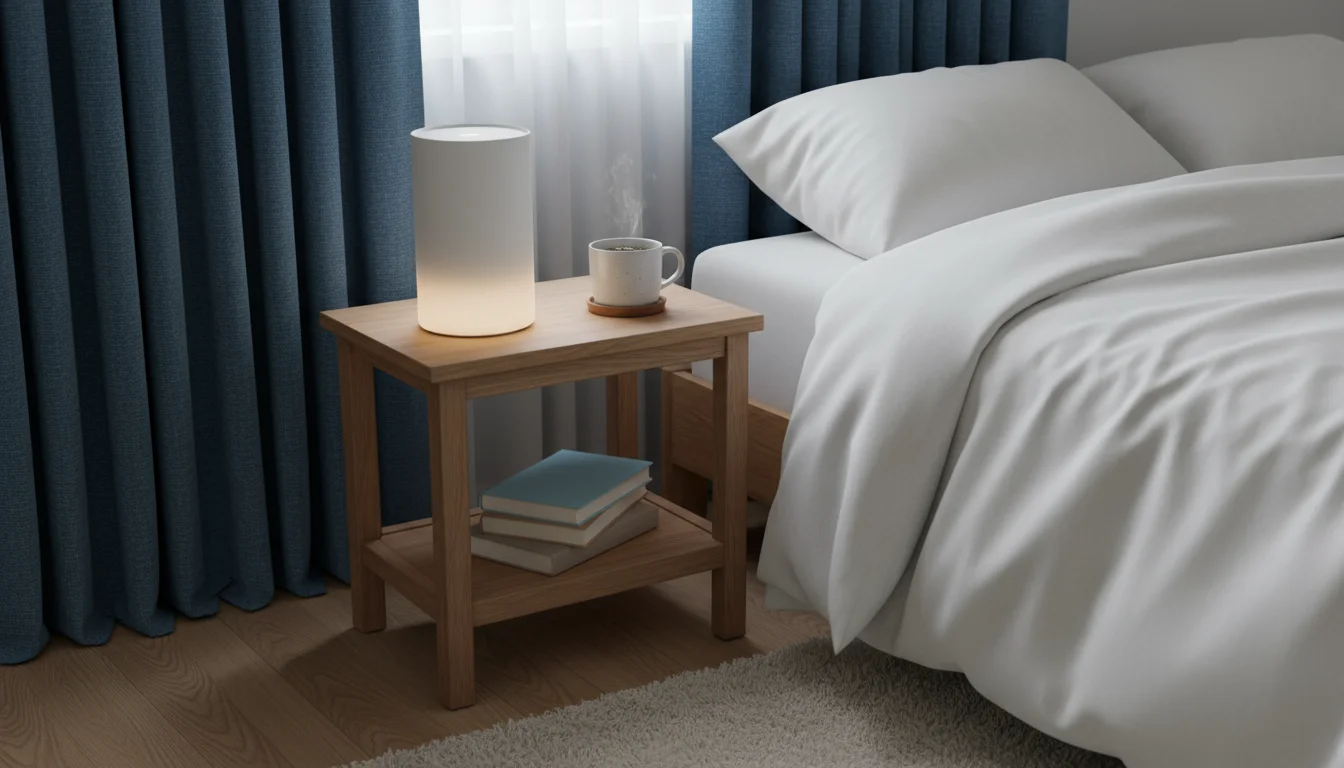
How to Build a Quiet Space
-
Mask Disruptive Noises with Consistent Sound. This may sound counterintuitive, but adding a quiet, constant sound can drown out jarring, sudden noises.
How to do it: A white noise machine is an excellent tool for this. These devices produce a steady, soothing sound, like rushing air, that masks other noises. A simple fan can serve the same purpose. There are also many apps and websites that offer free white noise, pink noise (which is a bit deeper), or nature sounds like gentle rain.
-
Block Noise at the Source. If noise from outside your bedroom is a problem, you can take steps to dampen it.
How to do it: Heavy curtains not only block light but also absorb sound. Placing a draft stopper or a rolled-up towel at the bottom of your bedroom door can help muffle sounds from the rest of the house. Rugs and carpets also absorb sound more effectively than hard floors.
-
Try Earplugs. For those who are very sensitive to noise or have a snoring partner, earplugs are a simple, inexpensive, and highly effective solution.
How to do it: Look for soft foam or silicone earplugs designed for sleeping. They are made to be comfortable enough to wear all night. It may take a night or two to get used to the feeling, but many people find them indispensable.
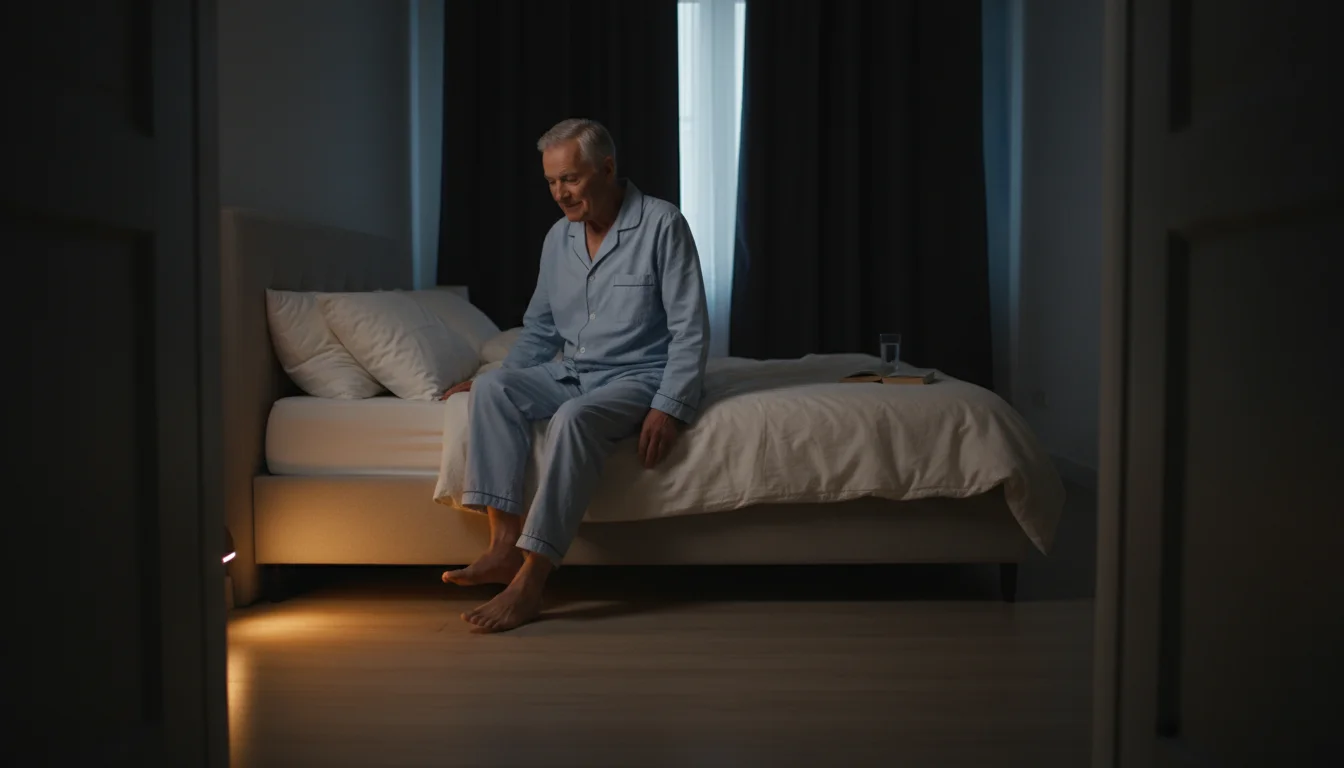
Step 4: Design for Comfort and, Above All, Safety
Your physical comfort in bed is essential, but so is your feeling of security. A bedroom that is cluttered or difficult to navigate in the dark can create underlying anxiety and pose a serious safety risk.
The ‘Why’ for Seniors
Pain and discomfort from an unsupportive mattress or pillow can make falling and staying asleep difficult. More importantly, falls are a major health risk for seniors, and many happen at night during trips to the bathroom. A safe bedroom layout is non-negotiable.
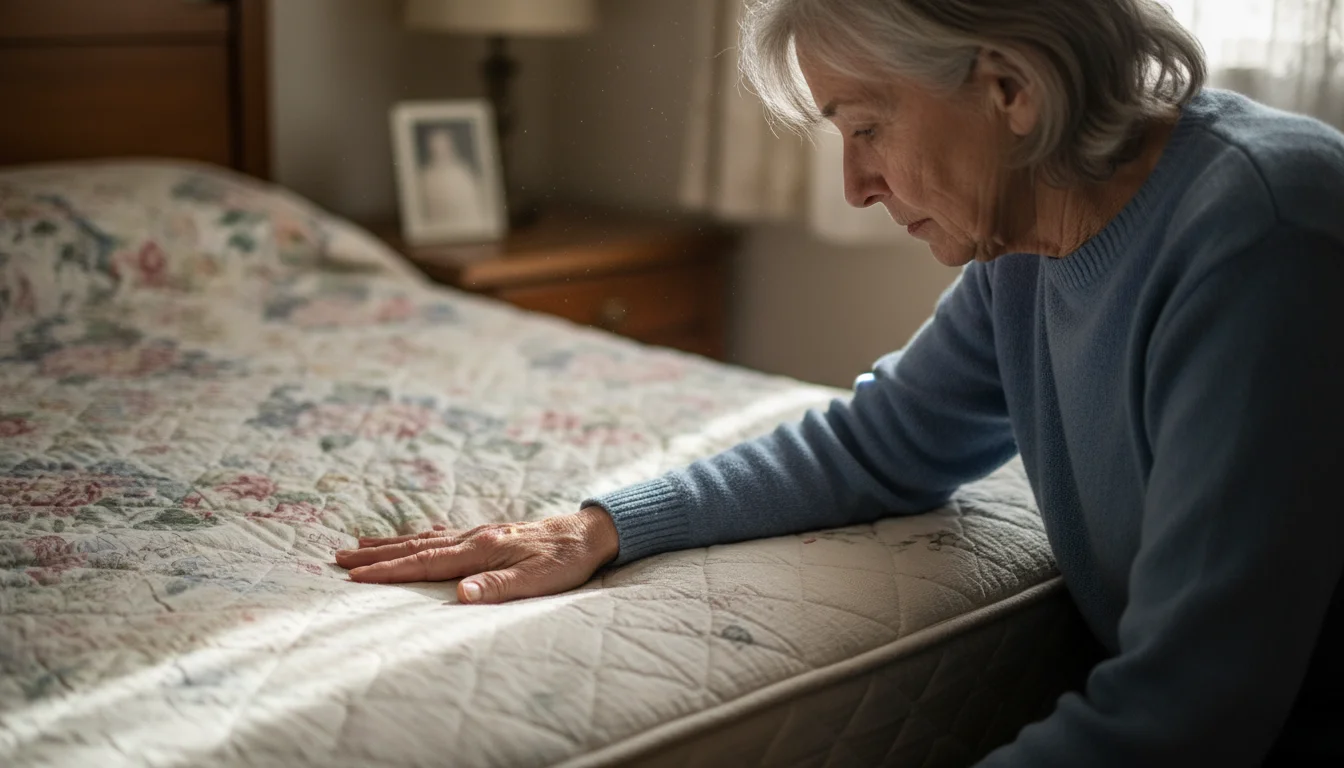
How to Ensure Comfort and Safety
-
Assess Your Mattress and Pillows. A mattress that is too old (typically over 8-10 years) loses its ability to provide proper support, leading to aches and pains.
How to do it: If your mattress is sagging, lumpy, or leaves you feeling sore, it’s time to consider a replacement. Your pillow should support the natural curve of your neck. Whether you are a back, side, or stomach sleeper will determine the best pillow type for you.
-
Make Your Bed a “Sleep and Intimacy Only” Zone. Your brain is excellent at forming associations. If you regularly watch television, eat, work, or worry in bed, your brain will associate the bed with wakeful activities.
How to do it: Make a conscious effort to use your bed only for sleeping. This strengthens the mental connection between your bed and rest, making it easier to fall asleep when you lie down. This is a key part of a bedroom calming design.
-
Declutter for a Calm Mind and a Safe Path. A tidy room promotes a feeling of peace and order. More critically, a clear floor prevents trips and falls.
How to do it: Remove any unnecessary furniture, piles of clothes, or boxes from your bedroom floor. Pay special attention to the path from your bed to the door and to the bathroom. This path should be wide and completely free of obstacles like shoes, rugs with curled edges, or electrical cords.
-
Light the Way for Nighttime Safety. Waking up in a pitch-dark room can be disorienting and dangerous if you need to get up.
How to do it: Place low-level, motion-activated nightlights along the path from your bed to the bathroom. Choose lights with a warm amber or red tone, as these colors are far less disruptive to your sleep than bright white or blue lights.
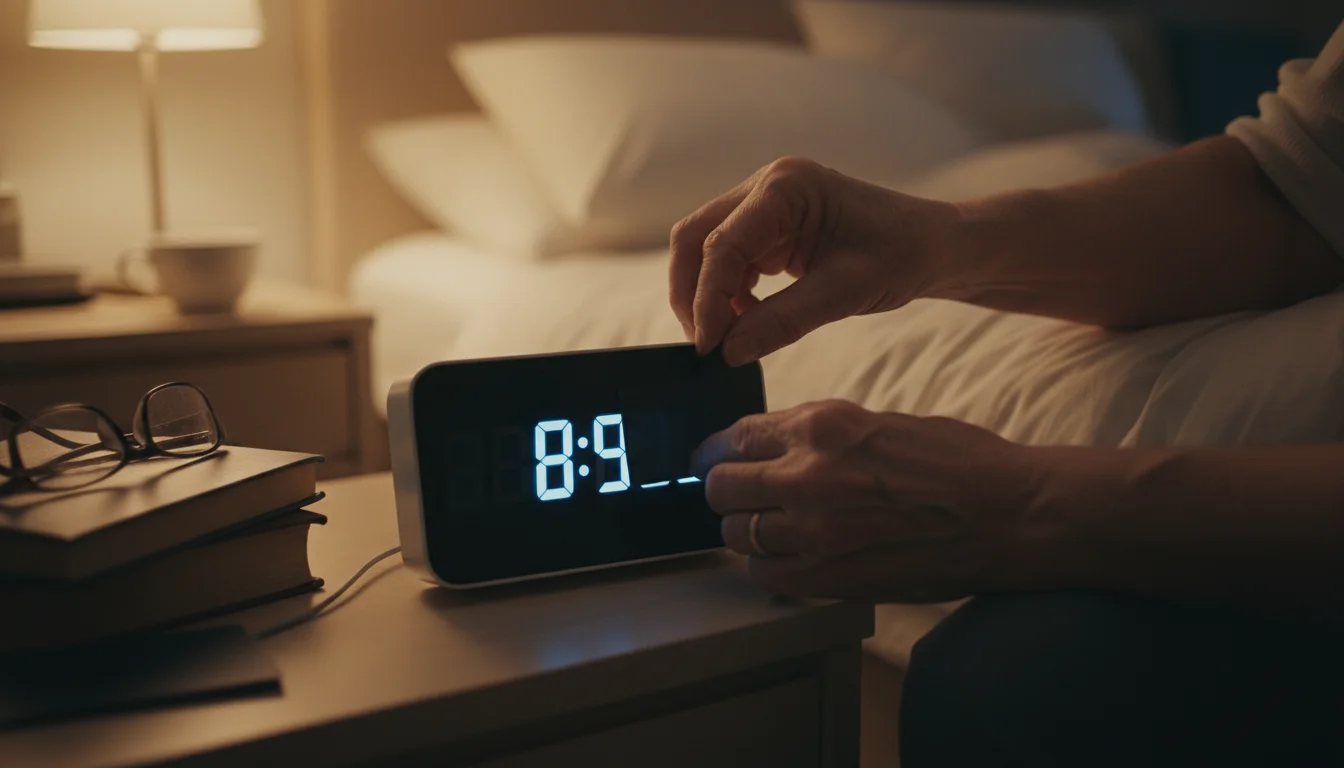
Conclusion: Your Journey to Better Sleep Starts Tonight
Creating a calm, restful sleep environment is one of the most proactive and empowering steps you can take for your health and well-being. It’s a process of taking control of your surroundings to give your body the clear, consistent signals it needs to rest deeply.
Remember, you don’t have to do everything at once. Start with the one or two changes that seem easiest or most impactful for you. Perhaps you begin by covering the lights on your electronics tonight, or by turning down the thermostat by a degree or two. Each small adjustment is a step toward building your perfect sleep sanctuary.
Sweet dreams are not a matter of luck; they are often the result of thoughtful preparation. By following these steps, you are paving the way for more peaceful nights and more energetic days.
A Note on Your Health: While these changes can significantly improve sleep, they are not a substitute for medical advice. If you have persistent sleep problems, chronic pain, or concerns about heavy snoring (which could be a sign of sleep apnea), please be sure to speak with your doctor. They can help rule out any underlying medical conditions and provide personalized guidance.
For expert guidance on senior health and finance, visit Consumer Financial Protection Bureau (CFPB), Administration for Community Living (ACL), Eldercare Locator, AARP and Alzheimer’s Association.
|
Fact-Checked Content
Our editorial team reviews all content for accuracy and updates it regularly. Learn about our editorial process →
|



